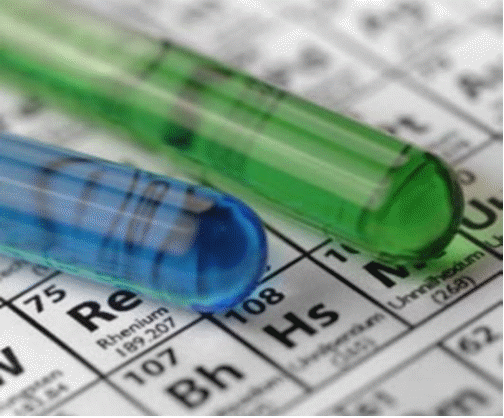
- •Unit 2. Inorganic chemistry
- •I. Lead-in
- •Active Vocabulary
- •II. Read the text and find the answers to the questions above. Text a
- •Inorganic chemistry
- •Ores and Alloys
- •Chemical Bonding
- •Concept of Acids and Bases
- •Coordination Chemistry
- •Nuclear and Radioactivity
- •With, Coordination, complexes, the, of, chemistry, deals, study.
- •Task 6. Fill in the gaps using the words and word-combinations given below in the correct form. Translate the sentences.
- •Inorganic chemistry
- •III. Read the following text. What is the meaning of the words in bold? text b types of inorganic chemical reactions
Unit 2. Inorganic chemistry
I. Lead-in

What does inorganic chemistry study? What topics does it deal with?
What is the modern definition of inorganic chemistry?
What is the difference between inorganic substances and organic ones?
What branches of chemistry is inorganic chemistry connected with?
Active Vocabulary
acid (n); acidic (a) – кислота; кислотный
alloy (n) - сплав
attach (v) - связывать, присоединять
balancing (n) - уравнивание
base (n); basic (a) – основание; основный
block of elements – семейство элементов
blurred (a) - расплывчатый, размытый
breakdown (n) - распад
chemical bond - химическая связь
combination reaction – реакция соединения
combustion (n) – горение
complex (n) - комплексное соединение
contain (v) - содержать
decomposition reaction – реакция разложения
electronic configuration - электронная конфигурация
extract (v)-извлекать, добывать
ligand (n) - лиганд
misconception (n) - неправильное понимание
ore (n) - руда
plant life - жизнь растений
predict (v) — предсказывать
precipitation (n) - осаждение
redox reaction - окислительно-восстановительная реакция
replace (v) – замещать
veer away from (v) - держаться в стороне, избегать
II. Read the text and find the answers to the questions above. Text a
Inorganic chemistry
A branch of chemistry which deals with the study of elements in the periodic table and their compounds, their physical and chemical properties is called inorganic chemistry. Inorganic chemistry deals with all topics except a part of carbon chemistry, which is dealt with under organic chemistry. Inorganic compounds are generally those that are not biological, and characterized by not containing any hydrogen and carbon bonds.
The term "organic" has traditionally referred only to animal or plant matter, so there is a common misconception that organic chemistry always refers to life processes, or that inorganic chemistry applies to everything that does not. This assumption is inaccurate. Many chemical processes veer away from this line of thinking, and there are many chemical life processes that depend on inorganic chemical processes.
There are exceptions to every rule. Although carbon is the main common element in organic chemistry, inorganic chemical compounds can contain carbon, too. For example, carbon monoxide and carbon dioxide both contain carbon, but are inorganic compounds. Carbon dioxide, in particular, is also very important to chemical processes necessary for life, especially plant life. The truth is that the lines between inorganic and organic chemistry are often blurred.
Inorganic chemistry deals with the following topics:
Atomic Structure
The history of atomic structure is studied under inorganic chemistry. Though atomic structure is studied under physical chemistry too, in inorganic chemistry, the structure of atom, atomic mass, number, electronic configuration, etc., are learned.
Study of Periodic Table
I norganic
chemistry in periodic table exclusively deals with the aspects of the
periodic table like arrangement of elements, the concept of periods
and groups, how properties of elements differ with their position in
the periodic table, periodic properties of elements in a particular
period and group etc. Periodic table is the most important tool box
for chemists. It helps us to bring an order into inorganic chemistry.
Periodic table is considered as center of study of inorganic
chemistry. It systematizes and rationalizes the chemical facts and
helps in predicting new ones. It suggests fruitful areas for further
research.
norganic
chemistry in periodic table exclusively deals with the aspects of the
periodic table like arrangement of elements, the concept of periods
and groups, how properties of elements differ with their position in
the periodic table, periodic properties of elements in a particular
period and group etc. Periodic table is the most important tool box
for chemists. It helps us to bring an order into inorganic chemistry.
Periodic table is considered as center of study of inorganic
chemistry. It systematizes and rationalizes the chemical facts and
helps in predicting new ones. It suggests fruitful areas for further
research.
Study of Individual Group Elements and Block Elements
Each group contains some elements whose properties are similar to each other. Similarly, each block contains elements which have similar electronic configuration. All these things are studied under inorganic chemistry, as separate topics. The blocks s, p, d and f are usually studied separately and then the groups under these blocks, the elements in them, etc are studied separately.
